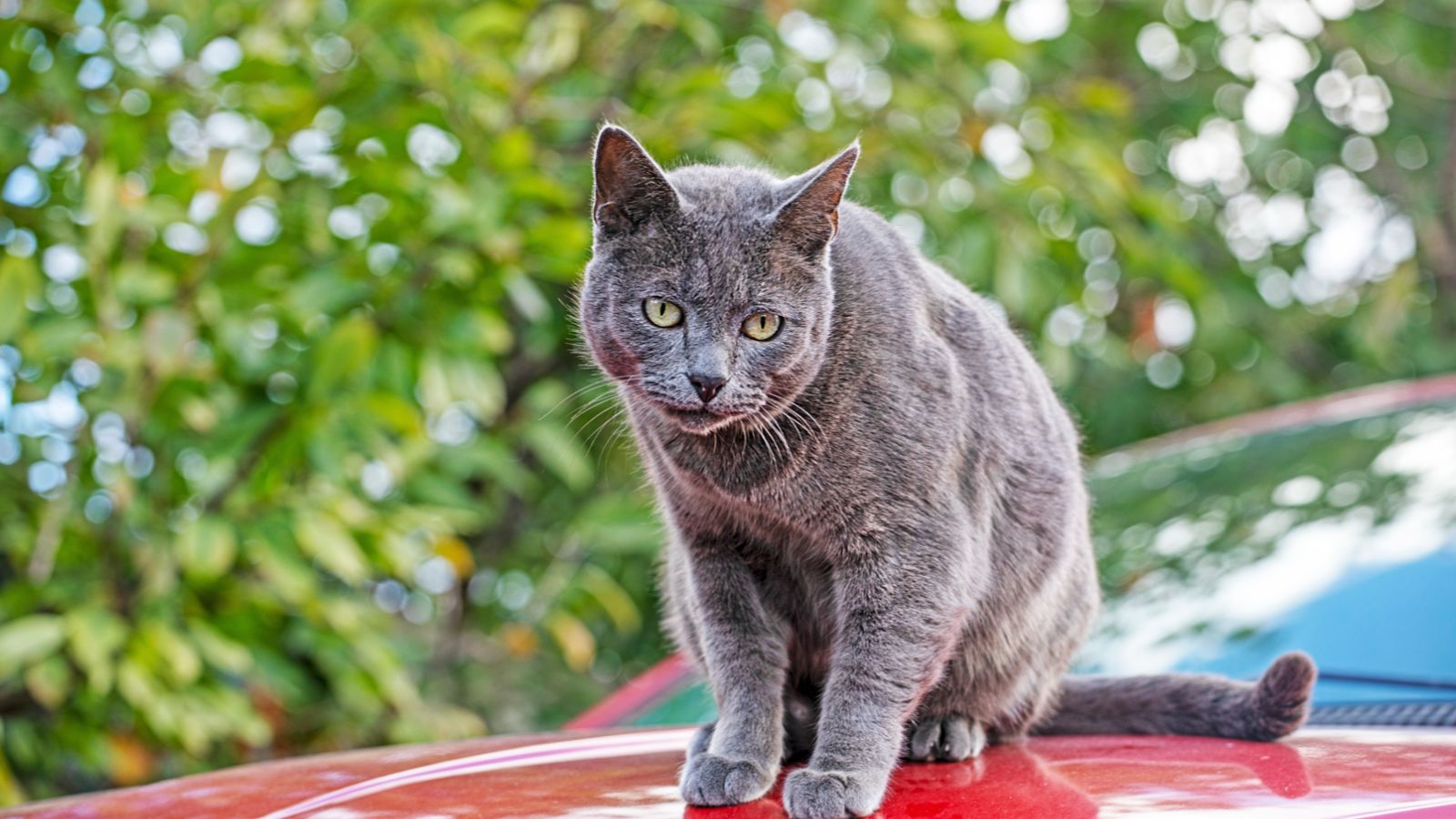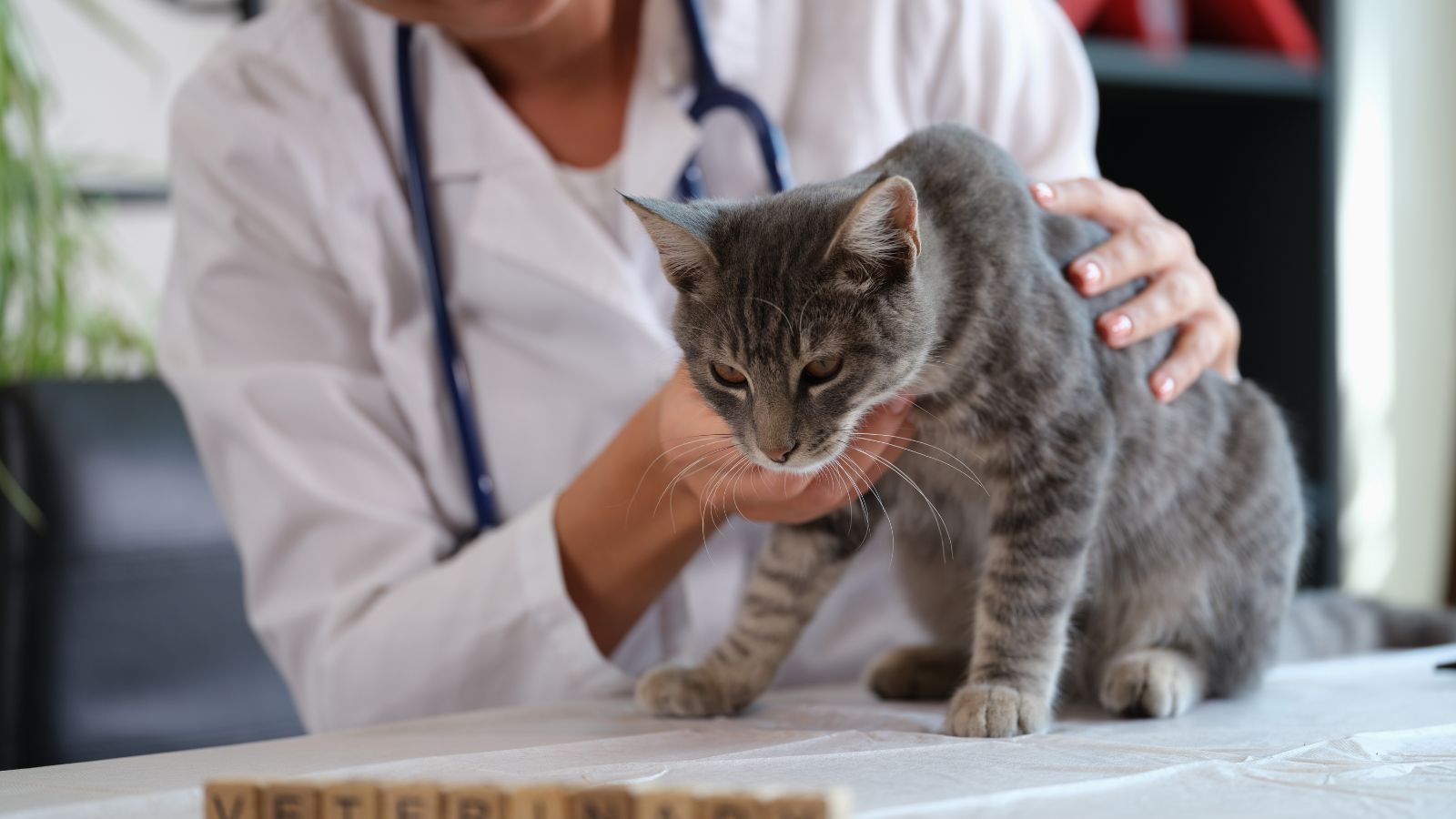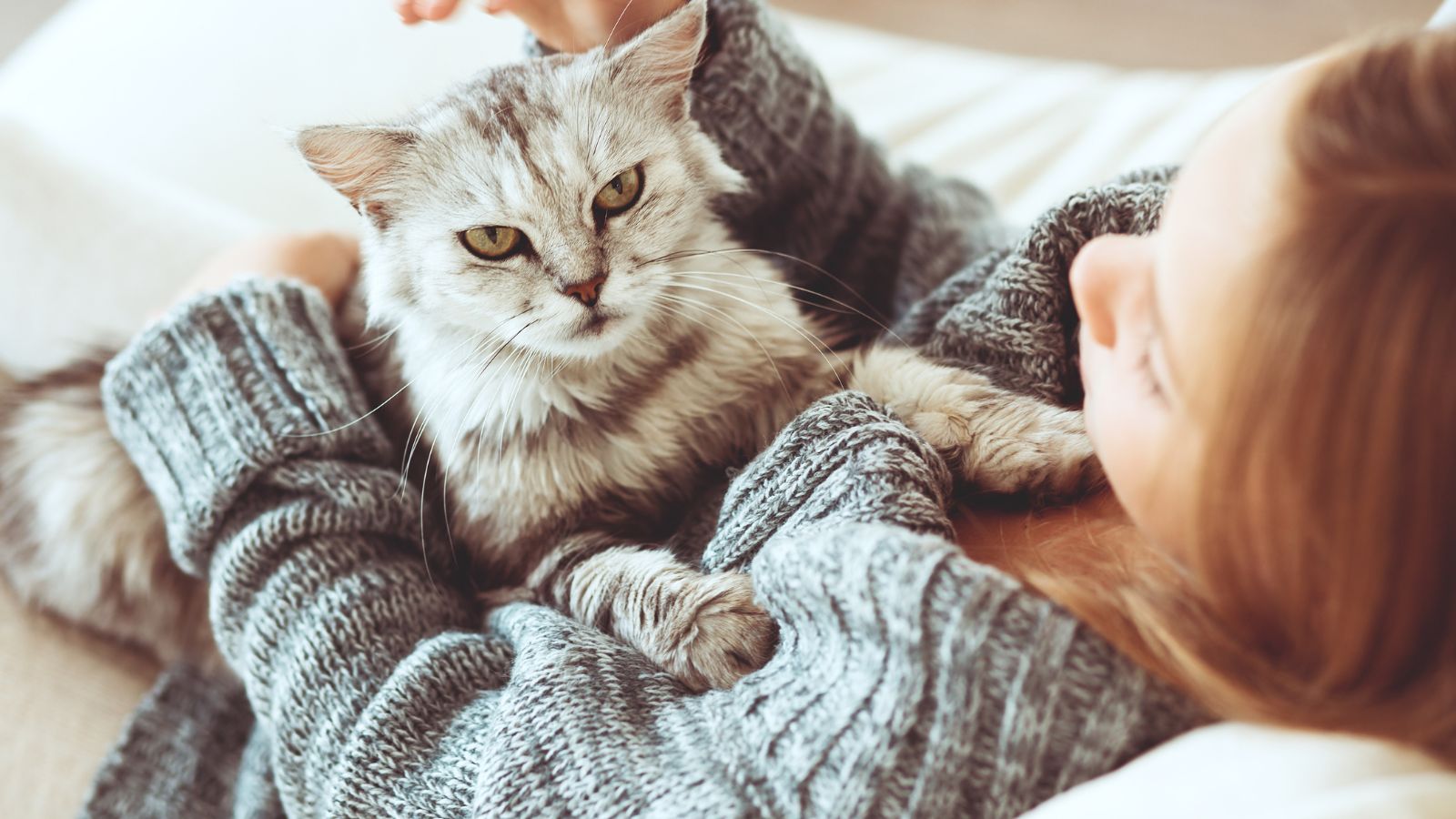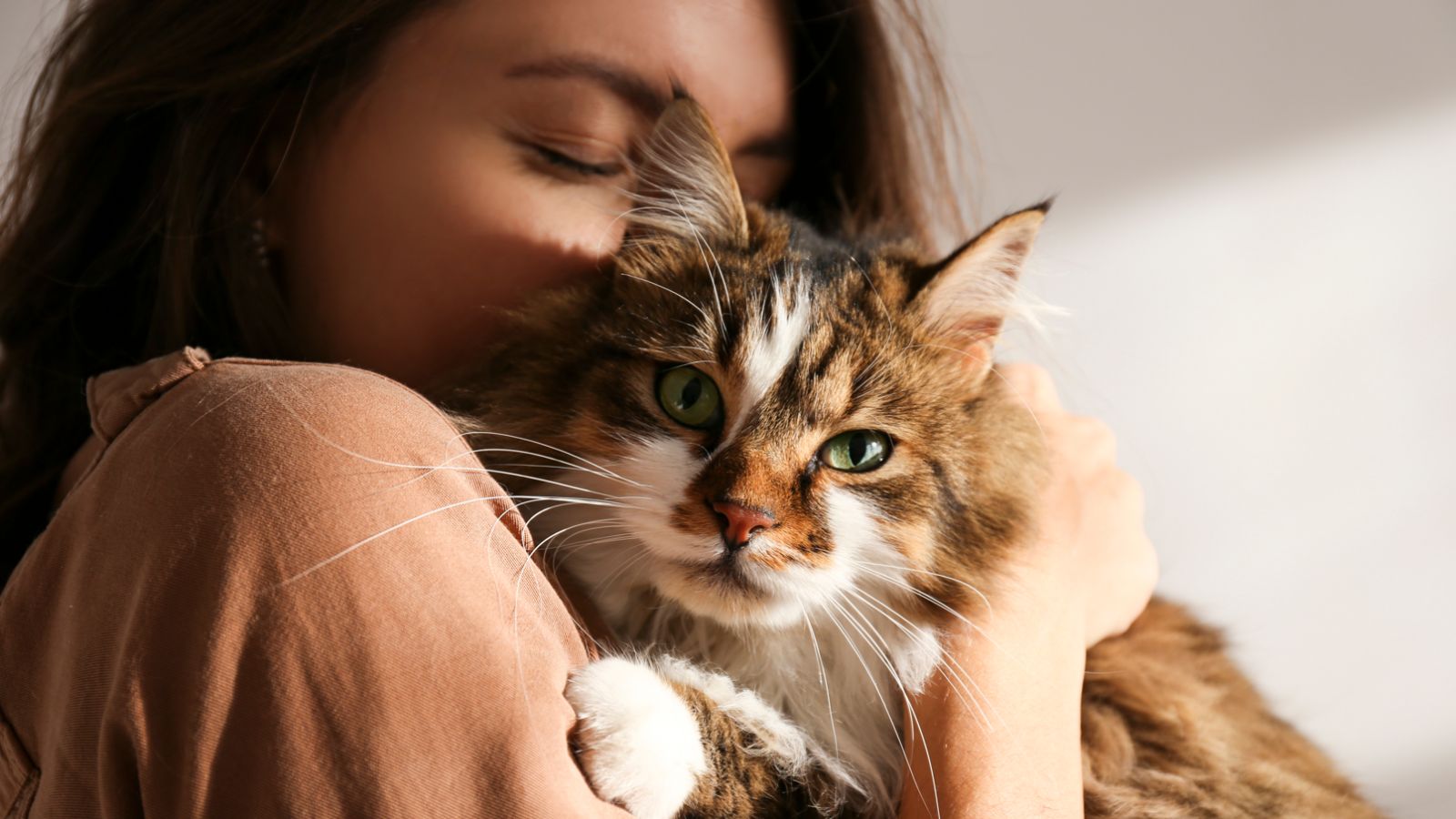Cats are known for being independent and stoic, giving affection on their own terms, especially when compared with dogs. Unfortunately, this aloofness can mask underlying health issues, stress, boredom, or unhappiness. While occasional furniture scratching isn’t a concern, certain changes in your feline friend’s habits can indicate a problem. Here are 19 signs you shouldn’t ignore.
Litter Box Issues

Changes in your cat’s litter box habits can be worrying, particularly if they start having accidents around the house, have blood in their urine/stool, or sit in the box for extended periods. Such behavior can indicate stress, UTIs, bladder stones, diabetes, constipation, or other problems. Take your feline friend to the vet to get checked out and take a sample if necessary.
Changes in Appetite

While cats are known to be fussy, a healthy cat typically maintains a consistent appetite and drinks more or less the same amount of water daily. If you notice a sudden decrease or increase in food or water consumption, don’t ignore it. Just Cats Clinic says this could be a sign of dental problems, stomach complaints, diabetes, kidney disease, UTIs, stress, or thyroid problems.
Excessive Vocalization

Unless your cat is an Oriental breed (like a Siamese) or known to be very ‘chatty,’ sudden and excessive yowling, meowing, hissing, or even purring can be a troubling sign, particularly if accompanied by changes in body language. Get your cat checked by a vet to eliminate the possibility that it’s in pain or distress or even suffering from cognitive decline.
Lethargy

Cats naturally sleep a lot, especially when they’re very young or elderly, but a sudden decline in activity isn’t normal. If your cat stops going out, playing, or interacting, consider the reason why—it could be unwell, depressed, or in pain. For reference, a healthy adult cat typically sleeps around 18 hours a day but is fairly active and alert during waking hours.
Excessive Grooming

Cats are meticulous groomers and spend hours maintaining their coats, but be vigilant if your cat suddenly starts licking, chewing, or scratching itself a lot more. This can be a sign of allergies, fleas, or skin infections. Purina also warns that overgrooming can indicate anxiety and is most common in cats who’ve experienced a recent change in their environment, like a new home or pet.
Hiding More

As small hunters, cats are both predators and prey, so they love to hide in high places where they can see what’s going on while feeling secure. However, if your normally outgoing or relaxed cat starts hiding away, it could be a sign that it doesn’t feel well, either mentally or physically. You should also take note if your cat starts hiding in new places, especially if they are particularly dark.
Flat Ears and Tucked Tail

According to The Guardian, frightened cats make themselves as small and flat to the ground as possible, protecting their vulnerable underside. A cat who is low down with flat ears and a tucked tail is scared or anxious, especially if accompanied by a growl or a hiss. If your cat does this a lot, consider trying to find the source to reduce or eliminate your cat’s fears.
Spraying Indoors

Spraying urine is a natural form of communication for cats, particularly unneutered animals. Still, it isn’t normal for previously house-trained pets to start marking. If your neutered male or female cats start spraying furniture, walls, or even you with urine, they’re likely insecure or stressed. This is often due to a new pet or stray invading your cat’s territory and competing for resources.
Difficulty Jumping

Cats are naturally agile creatures, and a healthy adult should be capable of jumping onto furniture, climbing stairs, and even traversing fence panels. If your cat suddenly loses the ability to jump or climb, it might be in pain, feeling weak, or suffering from a joint injury or disease like arthritis. Even if you don’t observe any limping or stiffness, take it for a vet check.
Destroying Furniture

Although scratching is a natural behavior for cats (used to sharpen their claws and spread their scent), your pet may be unhappy if they start destroying furniture in your home. Excessive scratching can indicate boredom, stress, or an insufficiently enriching environment. Ensure they have a sturdy, easily accessible scratching post that is tall enough and placed in a ‘safe’ place.
Aggression

PetMD asserts that aggression is a common but complex behavior in cats and can be induced by fear, stress, maternal instinct, or pain. While some seemingly violent behavior is a reaction to playing or being petted, excessive defensive body language, hissing, swatting, and biting may indicate your cat sees you or its environment as threatening, particularly if the behavior is new.
Dilated Pupils

In normal lighting conditions, a cat’s pupils will be constricted, meaning you can see a large portion of the colored part (the iris). If your cat’s pupils are large, even in bright light, that is a sign of fear, surprise, or pain. Observe their body language for other indicators of distress or pain, and take your pet to see a veterinarian if you can’t determine the cause and alleviate it.
Ignoring Toys and Play

Unless your cat is elderly or known to be indifferent to toys, they should be consistently curious and playful. If they exhibit a sudden lack of interest in their toys, interactive games, or activities like chasing after laser pointers, they might be depressed or in pain. It could even signal an issue with their eyesight or hearing. If new toys get the same reaction, consider a visit to the vet.
Destructive Chewing

While kittens might chew on things as they explore their environment and grow new teeth, adult cats typically outgrow this behavior. Chewing on furniture, electrical cords, or other household items can be a sign of boredom, stress, or separation anxiety. Ensure your cat can’t access anything toxic or dangerous, and provide them with chew toys while you address the underlying problem.
Vomiting Repeatedly

Vomiting is a common behavior for cats and isn’t necessarily a cause for concern if it’s an infrequent occurrence. Cats Protection says that felines often eat grass to induce vomiting to clear their digestive tract, and you needn’t be concerned unless there is blood, they vomit excessively, or you suspect they have a blockage or have ingested something poisonous.
Ignoring You

This may be an entirely common behavior for most cats, but take notice if your normally friendly and responsive pet suddenly stops seeking your attention or spending time with you. A sudden reduction in behaviors such as head butting, cuddling, or sitting on your lap can indicate that the cat is feeling stressed, unhappy, or even unwell. A vet check will put your mind at ease.
Following You Incessantly

In contrast to being ignored, the opposite behavior can also be a concern if it’s out of character for your pet. Be cautious if a normally independent or aloof cat suddenly follows you everywhere, particularly if they vocalize and try to get your attention. This could indicate anxiety or insecurity, or that they’re unhappy with a change in their environment and want you to fix it!
Staring

Cats are naturally curious creatures and stare when they’re hunting, playing, or exploring. However, an unnaturally prolonged or unwavering stare (especially when there’s nothing there) can be a sign of stress or aggression, particularly when accompanied by flattened ears or a twitching tail. Try slowly blinking at your cat as a calming signal to de-escalate any tension.
Excessive Kneading

Affectionately known as “making biscuits,” this behavior mimics nursing behavior from kittenhood, is very common in pet cats, and normally signals that they’re content and comforted. Yet, excessive kneading or a sudden increase in this behavior can be worrying, especially if your pet drools a lot or meows while doing so, as this can indicate stress or anxiety.
Read More: Why People Aren’t Religious Anymore: 15 Simple Reasons

As society evolves, so does our approach to spirituality. This article looks at the subtle yet profound shift from traditional religious adherence to a more personal, evidence-based belief system.
Why People Aren’t Religious Anymore: 15 Simple Reasons
17 Things Society Can No Longer Do Because Gen Z Said So

Gen Z, our digital-native, trendsetting generation, is making waves in the cultural sea, steering the ship of societal norms in fresh and unexpected directions. As they charter new territories, there are certain practices they’d rather we say goodbye to. Curious? Let’s take a look at 17 things the rest of us can no longer do because Gen Z said so.
17 Things Society Can No Longer Do Because Gen Z Said So
19 Common Behaviors of Highly Intelligent People

Intelligent individuals often display a range of behaviors and qualities that set them apart from others. When exploring these characteristics, it’s crucial to comprehend that intelligence is a multifaceted attribute. Here are 19 essential behaviors and qualities frequently observed in highly intelligent people.
19 Common Behaviors of Highly Intelligent People
17 Things We Were Taught in High School That We Now Know Aren’t True

Well, this one may depend on when you went to high school, but for this millennial, these are the things we were taught in high school that have been proven not to be true. Personally, I still want to go back and correct every teacher who told me I wouldn’t always have a calculator in my pocket; the joke is on them.
17 Things We Were Taught in High School That We Now Know Aren’t True
16 Reasons Why Trump May Not Get a Second Term

Though Republican frontrunner Donald Trump thinks his trip back to the Oval Office is all but guaranteed, there are some real hurdles he has to get past. Here are the 16 obstacles that may stand in the way of a second term.

